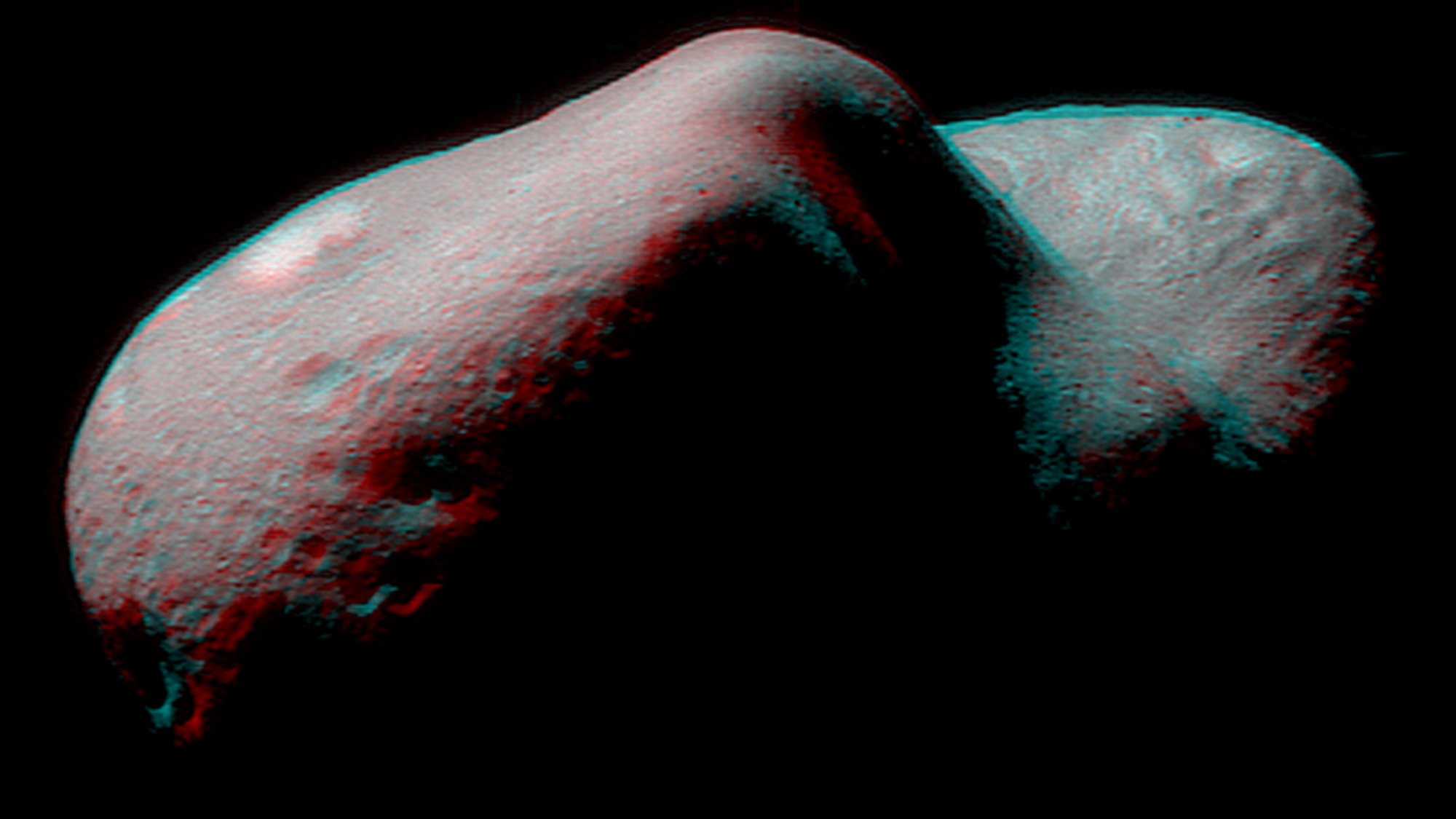

Astronomers have been surveying the sky for years to catalog and track so-called Near-Earth Objects (NEOs), asteroids and comets that come near to or cross paths with our planet’s orbit. Humanity has even been preparing for the possibility of protecting ourselves against a catastrophic collision; for example, the recent Double Asteroid Redirection Test (DART) mission nudged the asteroid Dimorphos in 2022 to prove our technology could help deflect a problematic space rock.
But, asteroids are all over the solar system, not just near Earth. Naturally then, other planets must have close encounters with—or even impacts from—wayward bits of cosmic rubble, too. Of particular interest is our neighbor planet, Mars, as we plan to send humans there in the coming decades. A new research paper accepted to the Monthly Notices of the Royal Astronomical Society Letters takes a look at asteroid threats to the red planet, and finds about two-and-a-half times more potentially hazardous asteroids at Mars than on Earth.
[ Related: NASA’s asteroid blaster turned a space rock into an ‘oblong watermelon’ ]
When you think about it, this actually makes intuitive sense. Mars is much closer to the asteroid belt–our solar system’s main reservoir of rocky debris–than Earth. Of course something closer to the source would encounter more strays. “It is well known that the number of Mars crossers is larger than the number of Earth crossers,” adds Alessandro Morbidelli, an astronomer at the French Observatoire de la Côre d’Azur, not affiliated with the new work.
This research team specifically investigated potentially hazardous asteroids, or PHAs. These are a subset of NEOs (or in their case, NMOs—Near-Mars Objects) that are both big enough to be a problem, and on a path that closely grazes the planet in question. “We speculate that there are more [potentially hazardous] asteroids around Mars than around Earth, and numerical simulations in our work confirm this speculation,” explains Yufan Zhou, lead author and astronomer at Nanjing University. According to their simulations, there are almost 17,000 PHAs that could skim past Mars, but only about 4,700 such asteroids around Earth.
[ Related: What astronomers learned from a near-Earth asteroid they never saw coming ]
Zhou and collaborators determined that at least 52 PHAs that make a close approach to Mars could be visible to us each year—and how cool would it be to see an asteroid smack into a nearby planet (or at least get close) with no risk to us? There’s a catch, though: these objects are quite hard to detect, given how tiny and dark they are in the vast abyss of space.
“The population of Mars PHAs is generally less well-known simply due to observational completion—Mars PHAs being further from Earth on average so harder to find—as the authors note,” adds Peter Brown, an astronomer at Western University in Ontario. Despite the observational challenges, astronomers have discovered over 26,000 Mars-crossing asteroids from here on Earth, mostly on the larger end of the spectrum of asteroid sizes.
[ Related: Water molecules detected on the surface of an asteroid in space for the first time ]
Giant survey telescopes that will come online in the next few years—particularly the Vera Rubin Observatory, which will scan the whole sky every three nights—will be particularly useful for discovering new asteroids, from NEOs to Martian PHAs and beyond in the solar system. Astronomers are also working on space telescopes whose primary job is to stand lookout for hazardous asteroids near Earth, such as the Near-Earth Object Surveyor, set to launch in late 2027.
Zhou is focused on the big picture of humanity’s efforts in space, expanding our view of hazardous asteroids to encompass Mars, too. “In the future, as human visits to Mars become more frequent, the threat posed by Mars close approach PHAs may increasingly be taken seriously,” he says.
Other astronomers disagree with this view, however, instead looking at Mars PHAs as a problem further down the road. “Earth is still the place to focus such discovery efforts since Earth approaching asteroids are the ones that pose an impact hazard to where humanity is actually located,” says Rob Weryk, astronomer at the University of Western Ontario and member of the Pan-STARRS survey to discover NEOs. Earth does have a particularly close call coming up, as the asteroid Apophis is set to scrape by our planet in 2029, getting closer to Earth than most of our communications satellites. While Mars exploration is a fun sci-fi dream, we do have to take care of Earth—whether that’s working on climate change or asteroid deflection—in order to make that future even possible.
